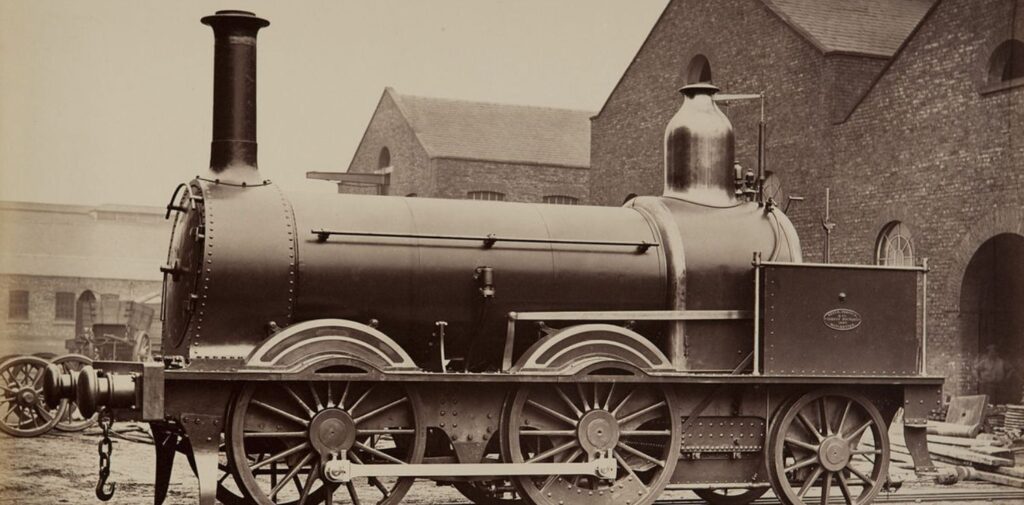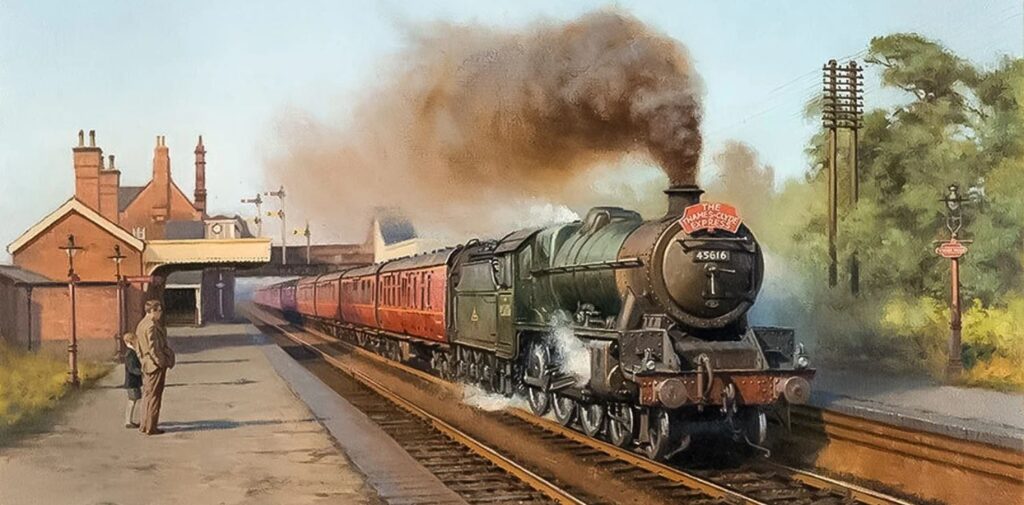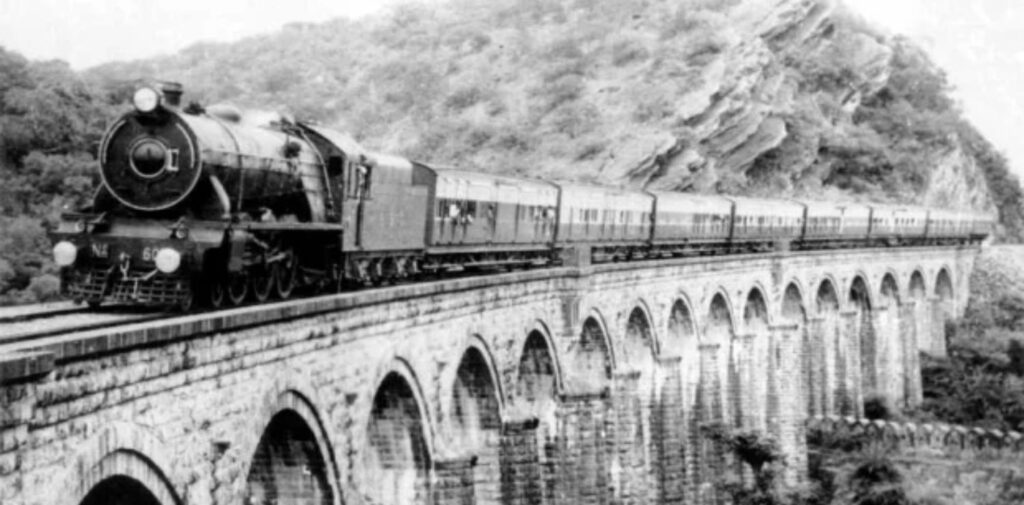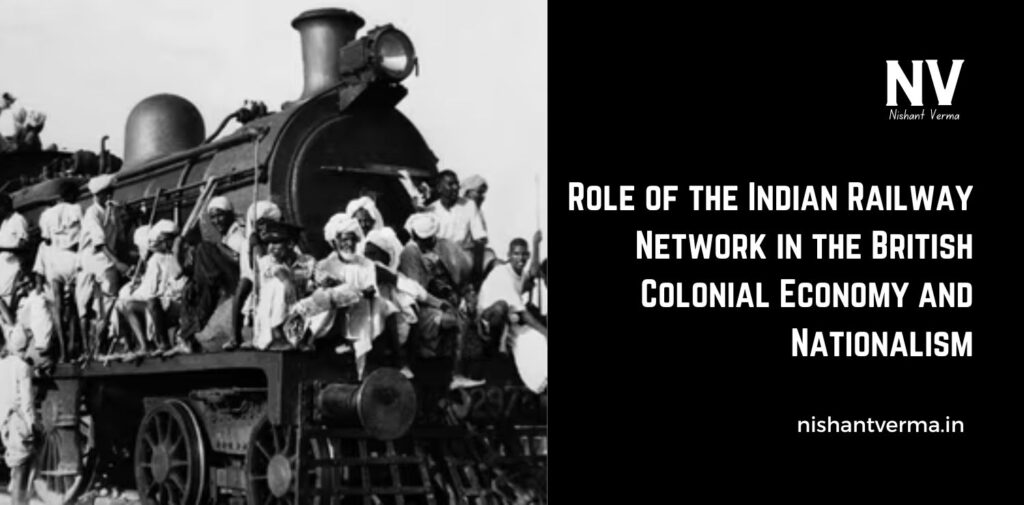The Indian Railway Network is one of the largest and busiest railway systems in the world today. But do you know that it played a very important role during British rule in India? It was not just a way to travel, but a powerful tool that helped the British control the country’s economy and even affected the way Indians started thinking about their freedom. In this article, we will learn how the Indian railway system was used during British colonial rule and how it also helped in the rise of nationalism.
The Beginning of Indian Railways
In 1853, the first railway line in India was opened. It ran between Bombay (now Mumbai) and Thane, covering a distance of just 34 kilometres. This was just the beginning. Over the next few decades, the British built a vast network of railways all across India. By the early 1900s, India had one of the largest railway systems in the world.
But why did the British build so many railways in India? The answer lies in their need to control the country and extract resources from it.

British Use of Railways for Economic Control
The British did not build the railway network to benefit the Indian people. Instead, it was designed to help them control the economy and make money. The railways were used in the following ways:
- Transporting Raw Materials: India was rich in natural resources like cotton, coal, iron, and wheat. The British needed these resources to fuel their industries back home in Britain. The railways helped transport these raw materials from the Indian countryside to the ports, from where they would be shipped to Britain. The British made huge profits from this trade, but the Indian people did not benefit from it.
- Moving Soldiers and Controlling People: The British used the railways to move their soldiers quickly across India. This was important to keep control over the large and diverse country. Whenever there were uprisings or rebellions, the British used the railways to send troops to those areas. The railways also helped them manage law and order in the vast land of India.
- Connecting Markets and Creating a Unified Economy: Before the railways, different parts of India had their local markets and economies. The railways connected these markets, making it easier to transport goods from one place to another. This created a single, unified economy where the British could easily take control of prices, taxes, and trade. This was not in favour of Indian traders or farmers, as they had to pay high taxes and were often forced to sell their goods at low prices.
The Negative Impact on the Indian Economy
While the British benefited from the railway network, it had a very negative impact on the Indian economy. Here’s how:
- The drain of Wealth: India’s wealth was drained by the British. The resources that were transported by railways were sent to Britain to be used in British factories. Indians were left with very little of the wealth that their country produced. The railways played a big role in this economic exploitation.
- Destruction of Local Industries: The British used the railways to bring in cheap goods from Britain and flood the Indian market with them. This destroyed many local industries, such as handloom weaving and handicrafts. Indian goods were no longer in demand, and many Indian artisans and craftsmen lost their jobs.
- Exploitation of Farmers: The British used the railways to transport crops like cotton, wheat, and indigo to ports for export. This meant that farmers were often forced to grow cash crops for the British rather than food for themselves. The farmers faced famine and poverty because they could not grow enough food for their own families. The railways made it easier for the British to take control of agriculture in India.

The Role of Railways in Nationalism
While the British used the railways to control India, the railway network also had an important role in the rise of Indian nationalism. The very system that the British built to control the country ended up becoming a tool for Indians to unite and fight for freedom.
- Connecting People Across India: Before the railways, India was a land of different languages, cultures, and traditions. It was difficult for people from one part of India to communicate or travel to another part. The railway network helped people from different regions and backgrounds come together. They were able to meet, talk, and share ideas more easily. This helped spread ideas of unity and freedom.
- Spreading Nationalist Ideas: With the help of the railways, nationalist leaders like Bal Gangadhar Tilak, Lala Lajpat Rai, and Bipin Chandra Pal were able to travel across the country and spread their ideas of independence. They gave speeches, organized protests, and inspired millions of Indians to join the freedom movement. The railways made it easier for people to come together for meetings and events.
The First War of Independence
One of the most important moments in Indian history was the First War of Independence in 1857, also known as the Indian Rebellion. While the British used the railways to send soldiers to stop the rebellion, the railways also played a role in spreading the news of the uprising. As the rebellion spread to different parts of India, the railways helped the information travel quickly. This showed that the railway system, which was built by the British for their benefit, could also be used by Indians to fight for their freedom.
The Growth of the Indian National Congress
The Indian National Congress (INC) was founded in 1885, and its leaders travelled across India to gain support for their cause. The railways played a big role in the growth of the INC. Leaders could now visit different parts of the country, meet people, and spread the message of independence. This helped the Congress gain more followers and make the idea of independence stronger in the minds of ordinary people.

The End of British Rule and the Legacy of Railways
By the time India gained independence in 1947, the railway system was already deeply entrenched in the country. It helped the British control the country, but it also helped unite Indians in their struggle for freedom.
After independence, the Indian government took over the railway system and turned it into an important part of the country’s development. Today, the railways continue to be an essential means of transport for millions of people.
Conclusion: Indian Railway Network
The Indian Railway Network played a very important role during British rule in India. It helped the British control the economy, transport raw materials, and move soldiers across the country. However, it also became a symbol of Indian unity and played a key role in spreading nationalist ideas. The very system that was built to control India helped Indians come together and fight for their independence. In this way, the railway network, which was once a tool of colonialism, became a vital part of India’s journey to freedom.




